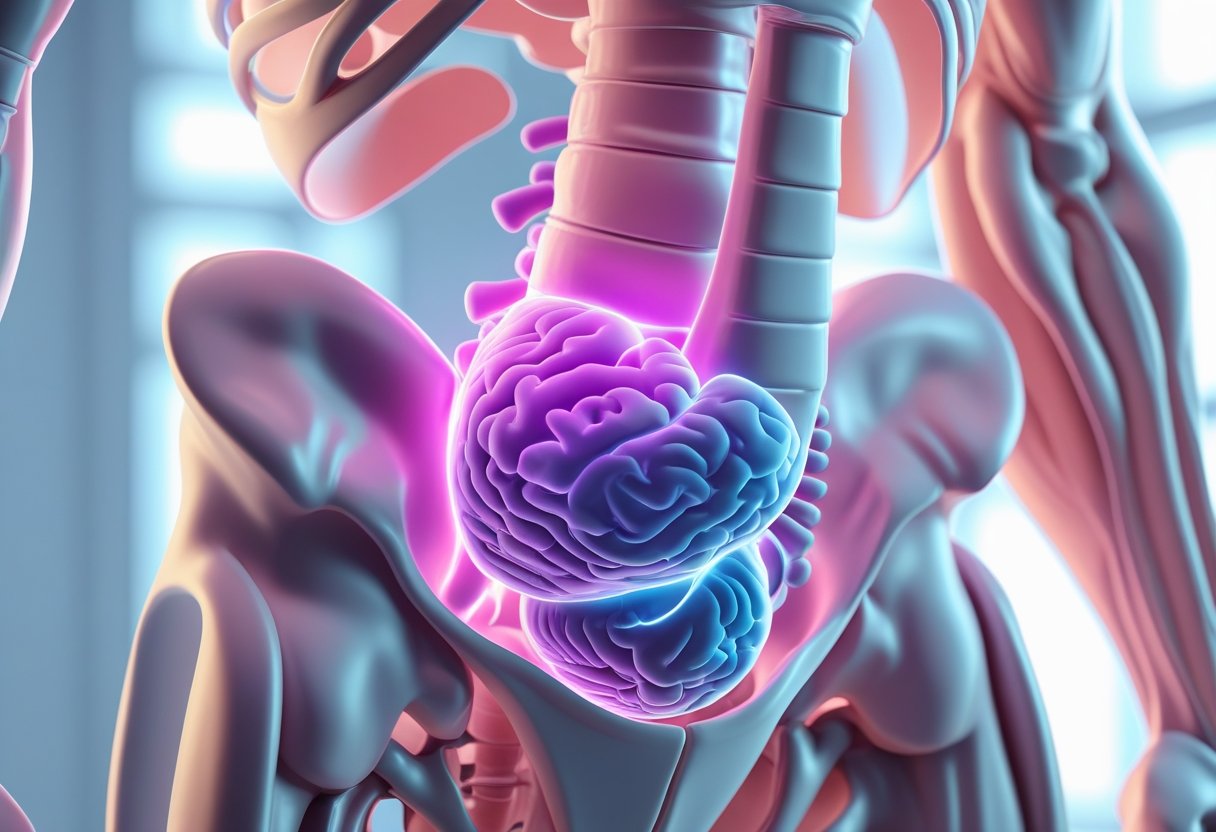Prostate health is important for men, especially as they get older. The prostate is a small gland that helps with reproduction, but it can also cause problems like enlargement, inflammation, or cancer. Taking steps to keep the prostate healthy can improve quality of life and prevent serious conditions.

Many prostate issues cause changes in urination and sexual function. Recognizing symptoms early and getting regular check-ups can lead to better treatment outcomes. Understanding common risks and how to reduce them helps men stay informed about their health.
Simple lifestyle choices, like diet and regular screenings, make a difference in prostate health. Knowing the facts about the prostate and its conditions empowers men to take control of their well-being and seek timely medical help when needed. More details are explained at the page about prostate health.
Understanding the Prostate Gland

The prostate is a small gland with a critical role in male reproductive and urinary systems. Its position and function can affect urine flow and sexual health. Over time, the prostate also undergoes changes that can impact overall health.
Prostate Anatomy
The prostate is about the size of a walnut and is located below the bladder. It surrounds the urethra, the tube that carries urine from the bladder out of the body. The gland sits in front of the rectum, making it accessible during certain medical exams.
The prostate is made of glandular and muscular tissue. The gland produces fluid that mixes with sperm to create semen. It has muscles that help push this fluid out during ejaculation. Blood vessels and nerves run through the prostate, supporting these functions.
Prostate Function
The prostate’s main role is in male reproduction. It produces fluid that nourishes and protects sperm. This fluid makes up a large part of the semen.
The muscles in the prostate help eject semen during ejaculation. These muscles also affect urine flow because they control how urine passes through the urethra.
The prostate’s secretions contain enzymes and proteins important for sperm health and mobility. This means the prostate is vital to fertility.
Lifespan Changes of the Prostate
The prostate changes as a man ages. It often grows larger starting around middle age, a condition called benign prostatic hyperplasia (BPH). This can press on the urethra, causing urinary issues.
Inflammation, or prostatitis, is also common and can cause pain or discomfort. The risk of prostate cancer increases with age too, making regular health checks important.
Men should monitor symptoms like frequent urination or difficulty starting and stopping urine flow. Early detection of changes helps manage health effectively. For more details, see this guide to understanding prostate changes.
Common Prostate Health Issues

Several health problems can affect the prostate, causing changes in urinary habits and overall well-being. These issues often increase with age, and symptoms vary depending on the condition.
Benign Prostatic Hyperplasia (BPH)
BPH is a non-cancerous enlargement of the prostate that affects most men over 50. As the prostate grows, it presses on the urethra, making it harder to urinate. Common symptoms include:
- Frequent urination, especially at night
- Difficulty starting urination
- Weak urine stream
- Feeling that the bladder is not completely empty
BPH does not lead to cancer, but it can cause discomfort and increase the risk of urinary infections. Treatment ranges from lifestyle changes to medications or surgery, depending on symptom severity.
Prostatitis
Prostatitis is the inflammation or infection of the prostate. It can happen at any age but is more common in men under 50. Symptoms usually come on quickly and may include:
- Pain in the lower back, groin, or genital area
- Painful or frequent urination
- Fever and chills in some cases
Prostatitis can be caused by bacteria or other factors. Doctors often treat bacterial prostatitis with antibiotics, while other types may require different approaches like anti-inflammatory medications or physical therapy.
Prostate Cancer
Prostate cancer develops when abnormal cells grow in the prostate. It usually progresses slowly and might not cause symptoms early on. When symptoms do appear, they often resemble those of BPH, such as difficulty urinating or blood in the urine.
Risk factors include age, family history, and ethnicity. Regular screenings like PSA tests can help detect cancer early. Treatment depends on the cancer stage and may include surgery, radiation, hormone therapy, or active monitoring.
More details about prostate problems can be found at Cleveland Clinic Health Essentials.
Recognizing Symptoms Related to Prostate Health

Changes in prostate health often show through specific signs. These signs mainly affect urination, cause pain or discomfort, and impact sexual function. Recognizing them early is important to get the right medical help.
Urinary Problems
Urinary changes are common with prostate issues like enlargement or infection. A man might find it hard to start peeing or feel a weak urine stream. Frequent urination, especially at night, is also a key sign.
Other symptoms include pain or burning during urination and a feeling that the bladder is not empty after peeing. Blood in the urine can sometimes occur and needs prompt medical attention.
These symptoms happen because the prostate surrounds the urethra. When it swells, it squeezes the tube, blocking urine flow. Spotting these signs early helps to prevent more serious problems. For more details, see symptoms of prostate problems.
Pain and Discomfort
Pain related to prostate problems may appear in the lower back, hips, or pelvic area. Some men experience discomfort during or after ejaculation. This pain can be mild or severe depending on the cause.
Inflammation of the prostate, known as prostatitis, often causes this pain. It may also lead to discomfort while sitting due to pressure on the prostate.
Pain can sometimes be confused with other conditions, so accurate diagnosis is important. Persistent pain should lead to a doctor’s visit to avoid complications.
Sexual Health Changes
Prostate issues can affect sexual health in several ways. Men may notice a decrease in sexual desire or difficulty achieving an erection. Ejaculation might become painful or less strong.
These changes result from the prostate’s role in the male reproductive system. Problems can disturb hormone levels or nerve function linked to sexual response.
Sexual changes are a common, but often overlooked, sign of prostate health problems. Early discussion with a healthcare provider can guide appropriate treatment. For more on early signs, visit early warning signs of prostate issues.
Diagnosing Prostate Conditions
Diagnosing prostate problems involves several tests that check for signs of enlargement, inflammation, or cancer. These tests provide important details about prostate health and help doctors decide on the best treatment.
Prostate-Specific Antigen (PSA) Test
The PSA test measures the level of prostate-specific antigen in the blood. PSA is a protein made by the prostate, and higher levels can suggest prostate issues like infection, enlargement, or cancer.
A normal PSA level varies by age but generally is below 4.0 ng/mL. Values above this may require further testing. However, PSA levels can rise due to non-cancer causes such as prostatitis or benign prostatic hyperplasia (BPH).
The test is simple, involving a blood draw. It helps detect prostate cancer early but is not definitive alone, so doctors often use it with other exams.
Digital Rectal Examination
In a digital rectal exam (DRE), a doctor inserts a lubricated, gloved finger into the rectum to feel the prostate’s size, shape, and texture. This exam helps detect lumps, hardness, or irregular areas.
DRE is quick and can spot abnormalities that might suggest cancer or enlargement. It can also identify tenderness that points to infection.
While it cannot confirm prostate problems alone, DRE remains an important part of prostate health screening along with PSA tests.
Imaging and Biopsy Procedures
Imaging tests like ultrasound provide pictures of the prostate. A common method is transrectal ultrasound (TRUS), where a probe in the rectum sends sound waves to make images.
If tests suggest cancer, a biopsy may be done. During a biopsy, doctors take small tissue samples to check for cancer cells.
Advanced tests like urodynamic studies or pressure flow tests can also measure how well urine flows if BPH is suspected. These tools give detailed information to guide treatment decisions.
For more about these tests, see Prostate Tests – NIDDK.
Lifestyle Factors Affecting Prostate Health
Certain lifestyle choices play a clear role in prostate health. These include what a person eats, how active he is, and habits like drinking and smoking. Making good decisions in these areas can help lower risks of prostate problems.
Nutrition and Diet
A diet rich in vegetables, fruits, and healthy fats supports prostate health. Foods high in antioxidants, like tomatoes and berries, may help protect the prostate.
Red meat and high-fat dairy products should be limited, as they are linked to higher prostate risks. Instead, eating fish with omega-3 fatty acids, nuts, and whole grains promotes better prostate function.
Maintaining a balanced diet helps control weight, which is important since obesity can increase prostate issues. A nutritional approach that focuses on plant-based foods is often recommended for prostate care (instituteofurology.in).
Physical Activity
Regular exercise benefits prostate health by improving circulation and reducing inflammation. Men who engage in moderate physical activity, like walking or swimming, tend to have lower risks of prostate problems.
Exercise also helps control body weight and reduces the risk of conditions linked to prostate cancer. Even 30 minutes a day can make a difference.
Physical activity supports immune function and hormone balance, which are important for prostate well-being (ifm.org).
Alcohol, Smoking, and Prostate Health
Limiting alcohol intake is advisable, as excessive drinking may increase prostate cancer risk. Moderate consumption, like one drink per day, is generally considered safer.
Smoking harms overall health and may worsen prostate conditions by increasing inflammation and oxidative stress.
Avoiding tobacco and reducing alcohol use are important steps men can take to protect their prostate and lower the chance of disease progression (allseniors.org).
Prevention and Proactive Care
Maintaining prostate health involves regular monitoring, making informed choices about supplements, and attending consistent medical check-ups. These actions help detect issues early and support overall wellness.
Screening Recommendations
Routine prostate screening is important, especially for men over 50 or those with a family history of prostate problems. Two common tests include the prostate-specific antigen (PSA) blood test and the digital rectal exam (DRE). PSA tests measure protein levels that may indicate prostate issues, while DRE allows doctors to feel for abnormalities in the prostate gland.
Men with higher risk, such as African American men or those with close relatives who had prostate cancer, should consider starting screenings earlier, sometimes around age 40 or 45. Screening helps find problems before symptoms appear, improving outcomes and treatment options.
Supplements and Herbal Remedies
Some men use supplements or herbs to support prostate health, but results vary and should be approached carefully. Common supplements include saw palmetto, beta-sitosterol, and pygeum. These may help reduce mild urinary symptoms linked to prostate enlargement.
It is important for men to discuss any supplements with a healthcare provider to avoid side effects or interactions with other medications. Not all supplements are backed by strong scientific evidence. A balanced diet rich in fruits, vegetables, and healthy fats remains important for prostate wellness.
Regular Medical Check-Ups
Routine visits to a healthcare provider are key for ongoing prostate health. These check-ups allow for monitoring changes, discussing symptoms, and adjusting care plans as needed. Doctors can track PSA levels over time and perform physical exams.
Men should be honest about any urinary or sexual symptoms during appointments. Early communication can lead to timely testing or treatment. Keeping a record of health changes and following medical advice helps reduce risks associated with prostate conditions.
For more on screening and care, see a healthy aging guide for prostate health.
Treatment Options and Management Strategies
Prostate health management involves different approaches depending on the condition’s stage and severity. Options include medications, surgery, and care to support recovery. Each method targets specific goals like reducing symptoms, slowing disease, or improving quality of life.
Medications
Medications for prostate issues vary based on the problem. For benign prostate enlargement, doctors often prescribe alpha-blockers, which help relax muscles and improve urine flow. Another common type is 5-alpha reductase inhibitors, which shrink the prostate over time.
In prostate cancer, hormone therapy is used to lower male hormones that help cancer grow. This can slow or stop the cancer’s spread. Chemotherapy may be given if hormone therapy alone isn’t effective.
Medications can have side effects such as fatigue, hot flashes, or changes in sexual function. Patients should discuss benefits and risks with their healthcare provider to choose the best option.
Surgical Treatments
Surgery is often considered when medication or other treatments don’t work well. For prostate enlargement, a common procedure is transurethral resection of the prostate (TURP), which removes part of the prostate to relieve urine blockage.
Prostate cancer surgery usually involves prostatectomy, where the whole prostate gland is removed. This can be done using traditional open surgery or less invasive robotic-assisted techniques.
Recovery varies by procedure but may include temporary catheter use and monitoring for side effects such as incontinence or erectile dysfunction. Surgery aims to control symptoms or remove cancer completely.
Supportive Care and Rehabilitation
Supportive care helps manage symptoms and improve well-being during and after treatment. This includes physical therapy to strengthen pelvic muscles and improve bladder control.
Patients may also receive counseling or join support groups to cope with emotional challenges linked to prostate health issues. Pain management and treatment for side effects like fatigue can be part of this care.
Rehabilitation often focuses on restoring quality of life through lifestyle changes, exercise, and diet improvements. Healthcare teams tailor supportive care to each patient’s needs for the best results.
For more detailed treatment options, patients can visit the CDC’s prostate cancer treatment page.
Long-Term Outlook and Support
Maintaining prostate health over time requires a clear understanding of how to handle ongoing conditions, manage emotional health, and use available resources effectively. Long-term care often involves a mix of medical treatment and lifestyle adjustments.
Managing Chronic Prostate Conditions
Chronic prostate issues like benign prostatic hyperplasia (BPH) and chronic prostatitis require ongoing care. Treatment may include medications to reduce inflammation or surgery for severe cases. Men with BPH often see symptom relief through drugs or procedures like transurethral resection of the prostate (TURP), which remains a standard option for severe cases.
For chronic prostatitis, symptoms can persist despite treatment. Doctors focus on managing pain and inflammation with medication and changes in diet or habits. Regular medical checkups help monitor the condition and adjust treatments as needed.
Psychosocial Wellbeing
Prostate health issues can affect a man’s mental and emotional state. Anxiety, stress, or lowered self-esteem may arise from symptoms or treatments. Counseling or support groups can provide important emotional support.
Men are encouraged to openly discuss their feelings with healthcare providers and loved ones. Building a network of understanding people helps reduce stress and improve quality of life during long-term management.
Patient Resources and Support Networks
Access to reliable information and community support aids in coping with prostate conditions. Educational materials guide men on lifestyle changes like diet and exercise that support prostate health.
Support groups offer opportunities to share experiences and advice. Online forums, local groups, and healthcare organizations provide assistance ranging from medical advice to emotional support. Connecting with these resources helps men stay informed and empowered in managing their health.
For more information on managing prostate health and support options, visit Prostate Health For Senior Men.

